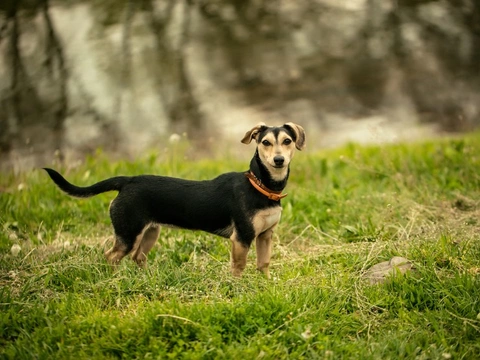
Owners urged to take care after dogs die drinking from Brooklands Lake in Dartford
Three dogs have died after drinking water from Brooklands Lake in Dartford, causing concern and alarm among dog owners in the local area and across the country.
Brooklands Lake is located on Powder Mill Lane in the Dartford, Kent area, and is designated as a fishing lake as well as being a popular area for dog walkers to exercise their dogs, and in nice weather, allow them to swim.
As is often the case with open water sources in dog-friendly areas, dogs will of course often drink from the lakes, streams and ponds that they pass on their walks, and the Environment Agency have now cordoned off Brooklands Lake pending water analysis and an investigation.
As of the time of writing, three dogs have died and several others have been taken ill in the local area, and are currently being treated by a local veterinary clinic. After the source of the illness was traced back to Brooklands Lake, dog owners in the area have been advised to avoid the lake area until further notice, and as mentioned, warning signs and cordons have been erected around the lake itself.
Fishermen have also been advised not to fish in the lakes, and parts of the lake’s shore have been closed off to walkers and anglers as well.
What is the problem?
Currently, the official statement on the death of dogs in the area of the lake has been attributed to “unidentified poisoning,” pending further investigation.
Some of the possible suggestions for causes that have been made so far have included toxins or pollutants having been discharged into the lake itself, deliberate poisoning by a third party, and imbalances in the water chemistry of the lake that have led to the water becoming dangerous.
Water samples have been taken from the lake to speed up identification of the problem, and additionally, it seems that the lake’s fish stocks have not been affected by the problem.
It is also worth noting that people were also advised to keep away from Brooklands Lake in 2013, due to dangerously high levels of blue-green algae present in the summer season, and based on the recent weather patterns in the area and the sickness that has afflicted the unfortunate dogs involved, this may ultimately be found to be the problem once again.
What is blue green algae?
Blue-green algae is a specific type of natural algae that forms in some bodies of water when the conditions are right for it to thrive, which usually occurs when the water tables are low and the weather has been warm, both things that have occurred this year with the mild winter and early spring.
This unique combination of factors causes the algae that is naturally present within open water to bloom or reproduce rapidly; however, because the body of water cannot then sustain such a large culture of algae, it quickly dies off en masse.
The dying algae gives off gas that carries the dead algae to the water’s surface, and then the weather and any currents present carry it to the banks, where it is more likely to come into contact with dogs and other animals going swimming or stopping for a drink.
The water does not taste any different to the dog that drinks it-however, the dead algae itself is toxic, and so can make the dog very sick, and even, potentially lead to death.
How can you tell if a water source is safe?
Understandably, dog owners that are aware of the risks of blue-green algae will wish to avoid water sources that may potentially be dangerous to their dogs-but how can you tell if this might be the case? The answer is that you can’t always-sometimes, affected water looks perfectly normal, but in some cases, there are a few warning signs.
Water that is very green and soupy is likely going through a large algae bloom and so, should be avoided; also, the die-off of the algae itself can in some cases (but not always) cause a faint stagnant smell like ditch water or general decay.
Considering the factors that lead to algae blooms and die-off can also help, such as the combination of the weather and water levels-but this is of course not an exact science.
Prepare in advance for walks
During the spring and summer months, it is a good idea to check the news and weather reports daily if your dog likes to swim or you pass a lot of open water, to see if the conditions are right for an algae bloom. Checking the news will also keep you informed of any incidents in the area too, and you should of course always heed such warnings, and advice and information that might be posted around popular lakes and ponds themselves.
Consider muzzling your dog
If your dog will drink from ponds and lakes when out on walks before you can stop them, consider muzzling them to prevent this and carrying water with you to give to them regularly.
If you know or suspect that your dog has drunk, swum in or otherwise come into contact with blue-green algae, contact your vet for advice immediately.



